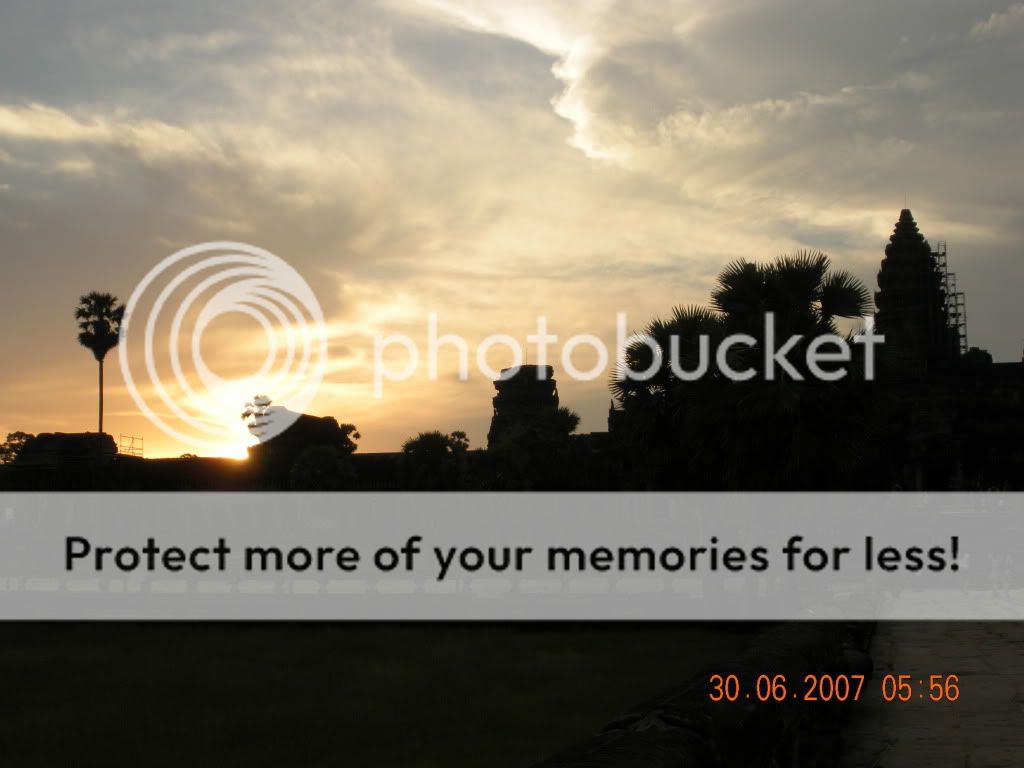This is the 3rd part of my post on Cambodia. I cannot believe how time flies and how long I have been abandoning this blog of mine since my previous post. My apologies to all recurring readers who may have come back to check for new updates. Here it is now.
What can I say about Bayon?! It is a temple ground full of amazing historical architecture and even more amazing history behind it. Bayon temple stands in the exact center of walled city of Angkor Thom, which was built as a square. It was built around 1190 AD by King Jayavarman VII and the Bayon temple represents the intersection of heaven and earth.
Bayon is known for its many huge towers of stone faces of the bodhisattva Avalokitesvara or 'Kwan Yin Pusa', the universal symbol of loving kindness, mercy and compassion known in the Buddhist world. Each tower consists of four faces of the bodhisattha Avalokitesvara and each is said to face the four directions - north, south, east and west. The curious smiling image, thought by many to be a portrait of Jayavarman himself, has been dubbed by some the "Mona Lisa of Southeast Asia."
Bayon Temple is surrounded by two long walls bearing an extraordinary collection of bas-relief scenes of legendary and historical events. In all, there are are total of more than 11,000 carved figures over 1.2km of wall. Personally, I think Bayon stands out more uniquely and more richly decorated compared to Angkor Wat. Bas relief of apsaras and heavenly gods and deities adorn the walls all around.
Stone statues line the path leading into Bayon
The first of many more towers of four faces of bodhisattva Avalokitesvara. This is at the entrance into Bayon.
The facade of Bayon

























